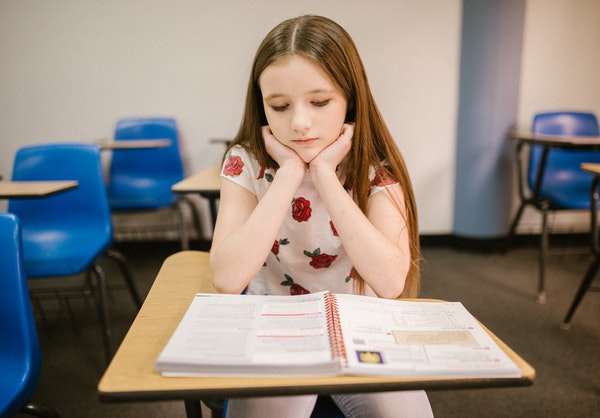
Photo by RODNAE Productions on Pexels.
Screening for mental health starts early
Recently, the U.S. Preventative Services Task Force issued a new guideline to the families of America. The panel of health professionals has recommended that children between 8 and 18 be screened for anxiety, and children ages 12 to 18 also be screened for depressive disorders.
The task force shared that anxiety going untreated may have significant physical impacts on the child, such as headaches and stomachaches. While, in the long term, it can cause developmental delays and poor academic performance.
The recommendation comes after children’s hospitals recorded that there were 38 percent more emergency visits for mental health cases and 54 percent more suicide and self-harm cases in the late months of 2021 compared to 2020.
What do anxiety and depression look like in children?
Fears and worries are typical for children to experience, however when those feelings of fear and sadness are extreme and persistent, your child may be dealing with anxiety or depression.
Anxiety
When a child remains anxious and fearful despite changing contexts and perhaps even begins to have trouble with school, home, or play activities, they may be diagnosed with an anxiety disorder. There are many types of anxiety disorders, including:
- Separation anxiety. Being afraid whilst away from guardians, family, friends, or specific people.
- Phobias. Having extreme fears pertaining to a specific thing or scenario.
- Social anxiety. Being afraid of any places or situations where they will be with other people.
- General anxiety. Being disproportionately worried about the future and bad things occurring to them or those they love.
- Panic disorder. Having episodes of unexpected, intense fear that come with a variety of physical symptoms.
Depression
Children shouldn’t be expected to be happy 24/7, but when they feel persistent sadness and hopelessness, they can be diagnosed with depression. Some things to look for in children with depression include:
- Feeling sad, hopeless, or irritable for a majority of their waking hours.
- Not wanting to participate in activities that they love and enjoy.
- Changes in eating patterns.
- Changes in sleep patterns.
- Changes in energy levels.
- Having a difficult time paying attention or staying engaged.
- Feeling worthless, useless, or guilty.
- Self-injury or other such destructive behavior.
How to help your child with anxiety and depression
The Anxiety & Depression Association of America provided some tips for parents and caregivers to help their child manage their anxiety and depression. They include:
- Pay attention to your child’s feelings and behavior.
- Stay calm when your child becomes anxious.
- Praise small accomplishments.
- Avoid punishing mistakes or lack of progress.
- Try to maintain a normal routine.
- Modify expectations during stressful times.
- Involve children in planning for any sudden transitions.
If you feel like your child may be dealing with either of these disorders, schedule an appointment with a mental health professional to get help.
Life Insurance Questions?
We hope that this information on Anxiety and Depression in children is useful to you.
If you’d like to learn how we can help you plan your retirement, call Empower Brokerage at (888) 539-1633 to speak to one of our Life and Annuity experts or leave a comment down below.
Get affordable life insurance quotes by clicking here.
See our other websites:

